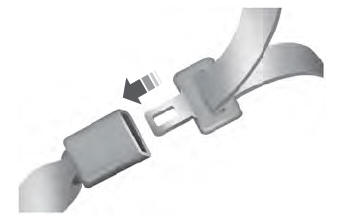Ford Escape 2020-2026 Service Manual / Electrical / Climate Control System / Climate Control System - General Information / General Procedures - Air Conditioning (A/C) Compressor Leak Detection
Ford Escape: Climate Control System - General Information / General Procedures - Air Conditioning (A/C) Compressor Leak Detection
Leak detection
-
Recover the refrigerant. Refer to Air Conditioning (A/C)
System Recovery, Evacuation and Charging procedure in Group 412.
-
Disconnect the refrigerant lines from the A/C compressor. Refer to the appropriate section in Group 412 for the procedure.
-
Install the adapters from the A/C Flush Adapter Kit on the ports of the A/C compressor, using the existing retaining bolts.
-
For access to the correct adapters and A/C Flush Adapter Kit 1 through 3.
Refer to: Climate Control Tools and Equipment (412-00 Climate Control System - General Information, General Procedures).
-
For access to the correct adapters and A/C Flush Adapter Kit 1 through 3.
-
Connect the high and low pressure lines of the air
conditioning service unit to the corresponding fittings on the adapter.
-
For access to the correct Ford approved A/C Refrigerant Management System
Refer to: Climate Control Tools and Equipment (412-00 Climate Control System - General Information, General Procedures).
-
For access to the correct Ford approved A/C Refrigerant Management System
-
Charge the A/C
compressor following the air conditioning service unit instructions.
Open the low pressure valve, the high pressure valve and set the
refrigerant charge amount to 0.23 kg (8 oz).
-
NOTE: Depending on refrigerant type used:
- Use a Rotunda-approved Electronic Leak Detector for R-134a refrigerant SAE Certified to J2791.
- Use a Rotunda-approved Electronic Leak Detector for R-1234yf refrigerant SAE Certified to J2913.
-
For access to the Ford approved Refrigerant Leak Detector
Refer to: Climate Control Tools and Equipment (412-00 Climate Control System - General Information, General Procedures).
-
When the leak test is complete, recover the refrigerant from the compressor.
-
If an external leak is found, install a new A/C compressor.
 General Procedures - Air Conditioning (A/C) Clutch and Air Conditioning (A/C) Clutch Field Coil
General Procedures - Air Conditioning (A/C) Clutch and Air Conditioning (A/C) Clutch Field Coil
Special Tool(s) /
General Equipment
412-001
(T71P-19703-B)
Remover, Compressor Pulley
Activation
Remove the A/C compressor. Refer to Air Conditioning A/C Compressor procedure in Group 412...
 General Procedures - Air Conditioning (A/C) Odor Treatment
General Procedures - Air Conditioning (A/C) Odor Treatment
Inspection
NOTE:
There are typically 4 types of objectionable odors found in a vehicle:
chemical odors
environmental odors
human and other interior-generated odors
microbiological odors
Before determining that A/C odor treatment is required, determine the source and the circumstances under which the odor occurs...
Other information:
Ford Escape 2020-2026 Service Manual: Specifications
Reference Value Symptom Chart NOTE: The Reference Value Symptom Chart provides guidance in selecting the appropriate parameter identification (PID) or measured signal related to the fault area. Select a symptom from the symptom chart along with the category number and go to the PID/Measured Signal Chart...
Ford Escape 2020-2026 Owners Manual: Emergency Call System Data
When the emergency call system is active, it may disclose to emergency services that your vehicle has been in a crash involving the deployment of an airbag or activation of the fuel pump shut-off. Certain versions or updates to the emergency call system may also be capable of electronically or verbally disclosing to emergency services operators your vehicle location or other details about..
Categories
- Manuals Home
- 4th Generation Ford Escape Owners Manual
- 4th Generation Ford Escape Service Manual
- All-Wheel Drive
- Locating the Pre-Collision Assist Sensors
- Removal and Installation - All-Wheel Drive (AWD) Module - 1.5L EcoBoost (132kW/180PS) – I3 (Y1)/2.0L EcoBoost (177kW/240PS) – MI4
- New on site
- Most important about car
Fastening the Seatbelts

Copyright © 2026 www.fordescape4.com
